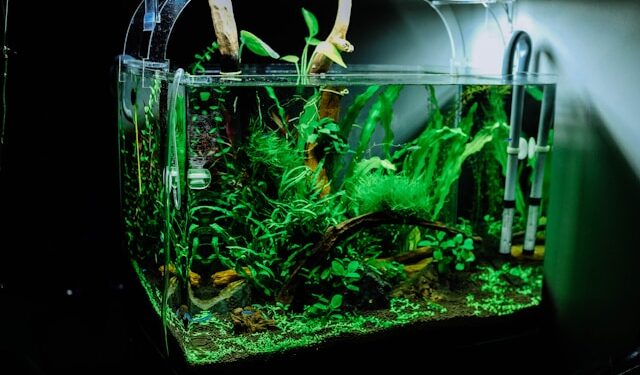Setting up an aquarium is an exciting and rewarding experience, but it requires careful planning to create a healthy environment for your fish. Whether you’re a beginner or an experienced fish keeper, understanding the key elements of a proper fish tank setup is essential. This guide will walk you through everything you need to know about how to set up an aquarium that is both beautiful and functional.
Choosing the Right Aquarium
Selecting the right fish tank is the first step in creating a successful setup. Consider the following factors when choosing your aquarium:
- Tank Size: A larger tank is generally easier to maintain because it provides a more stable environment. A minimum of 10 gallons is recommended for beginners.
- Material: Glass aquariums are durable and scratch-resistant, while acrylic tanks are lighter but more prone to scratches.
- Freshwater vs. Saltwater: Freshwater tanks are easier to maintain and better suited for beginners, whereas saltwater aquariums require more equipment and experience.
Essential Aquarium Equipment
To ensure a stable and healthy environment, you’ll need the right equipment for your fish tank setup:
- Filtration System: A high-quality aquarium filtration system is essential for removing waste and keeping the water clean. Choose from sponge, hang-on-back, or canister filters based on your tank size.
- Heater and Thermometer: If you have tropical fish, a heater is necessary to maintain a consistent water temperature. A thermometer helps monitor temperature fluctuations.
- Lighting: LED lights are energy-efficient and enhance the appearance of your aquarium while supporting plant growth in planted tanks.
- Air Pumps: These improve oxygen circulation, especially in densely stocked tanks.
Setting Up the Aquarium
Once you have the right tank and equipment, follow these steps to set up your aquarium:
- Choose and Prepare the Substrate: Gravel and sand are popular choices. Rinse the substrate thoroughly before adding it to your tank.
- Add Decorations and Plants: Include natural or artificial plants, rocks, and hiding spots to create a comfortable environment for your fish.
- Fill the Tank with Water: Use dechlorinated water to prevent harm to your fish. Water conditioners help remove chlorine and other harmful chemicals.
Water Quality and Tank Cycling
Proper aquarium water conditions are crucial for fish health. Before adding fish, you must establish the nitrogen cycle to create a stable environment.
- Understanding the Nitrogen Cycle: This process involves beneficial bacteria breaking down fish waste into less harmful compounds. Cycling a tank usually takes 4-6 weeks.
- Testing Water Parameters: Regularly test pH, ammonia, nitrate, and nitrite levels to ensure a healthy balance.
- Maintaining Water Quality: Perform partial water changes (20-30%) weekly to remove toxins and replenish essential minerals.
Selecting the Right Fish
Choosing the best fish for your aquarium depends on the tank size and water conditions. Some beginner-friendly fish species include:
- Betta fish (best for small tanks)
- Guppies (easy to care for and colorful)
- Tetras (peaceful and great for community tanks)
- Corydoras catfish (help clean the substrate)
Avoid overstocking the tank, as too many fish can lead to poor water quality and stress.
Introducing Fish to the Aquarium
When adding new fish, follow a proper acclimation process to prevent shock:
- Float the Bag: Place the sealed bag in the aquarium for 15-20 minutes to match the water temperature.
- Gradually Mix Water: Slowly add small amounts of tank water to the bag every 5 minutes.
- Release the Fish: Use a net to transfer the fish into the tank, avoiding the transport water.
Observe the fish for the first few days to ensure they adjust well to their new environment.
Routine Aquarium Maintenance
Keeping up with regular fish tank maintenance helps prevent problems and keeps your aquarium looking great:
- Water Changes: Replace 20-30% of the tank water weekly.
- Filter Cleaning: Rinse filter media in tank water (never tap water) to preserve beneficial bacteria.
- Algae Control: Use an algae scraper or introduce algae-eating fish like plecos or snails.
Common Aquarium Mistakes to Avoid
To ensure a successful aquarium setup, avoid these common mistakes:
- Overfeeding: Uneaten food leads to poor water quality. Feed only what your fish can eat in 2-3 minutes.
- Skipping Water Changes: Regular water changes are essential to remove waste and toxins.
- Mixing Incompatible Fish: Research fish compatibility before adding new species to prevent aggression and stress.
Conclusion
Setting up the perfect aquarium requires planning and patience, but the reward is a thriving aquatic environment for your pet fish. By choosing the right tank, maintaining proper aquarium water conditions, and following a regular care routine, you’ll create a beautiful and healthy habitat.





